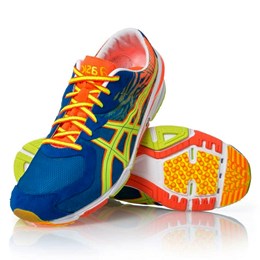21 June 2017
 Minimalist or lightweight running shoes, popularised as a safe alternative to conventional trainers, have been found to cause more harm than good for runners carrying extra weight, reveals research from the University of South Australia’s Sansom Institute for Health Research.
Minimalist or lightweight running shoes, popularised as a safe alternative to conventional trainers, have been found to cause more harm than good for runners carrying extra weight, reveals research from the University of South Australia’s Sansom Institute for Health Research.
Assessing the running experience of 61 trained runners, the 26-week study found that runners with a body weight of more than 85 kilograms and training in lightweight running shoes were over three times more likely to sustain an injury than when wearing conventional running shoes.
“About 2 million Australians participate in regular running or jogging as a means to improve their fitness or health, yet over half of us that run will incur an injury over the next 12 months,” says Dr Fuller, lead researcher of the study.
“The common solution is to buy a new pair of shoes—but do we buy heavily-cushioned shoes with lots of support to protect us from impacts when running, or lightweight shoes with minimal cushioning and support, to try to simulate a ‘bare-foot’ running experience?
“We found that the best shoe choice depended on your body weight.
“Lighter runners, weighing less than 71 kilograms, were able to improve their performance more when training in lightweight shoes, and this had no adverse effects on their injury risk.
“Heavier runners, weighing more than 71 kilograms, also improved their performance in lighter shoes, but had more injuries in that shoe type—and the heavier the runners got, the greater the risk of injury.
“Runners weighing over 85 kilograms—as the average Australian male does—are three times more likely to sustain an injury when wearing lightweight shoes.”
Co-researcher, Professor Jon Buckley, Director of UniSA’s Alliance for Research in Exercise, Nutrition and Activity (ARENA) says that while the findings are specifically connected to body weight, not body mass index (BMI), running distance also had an impact, regardless of weight.
“Minimalist shoes do have an appeal to runners and as they can help you run faster, but heavier runners should think twice about using them because they can increase the risk of injury,” says Prof Buckley.
“Weight produces higher impact forces that increase injury, regardless if this is the result of being a taller and possibly heavier person, or a person carrying a little more weight than average.
“So it’s not the BMI to be concerned about, it’s the actual weight.
“By following the bodyweight guidelines for using minimalist shoes, runners can avoid unnecessary injuries that result from inappropriate shoe choice.”
Contacts for interview:
Professor Jon Buckley, Director of the Alliance for Research in Exercise, Nutrition and Activity (ARENA), at the University of South Australia
Phone +61 8 8302 1853 | Mobile 0417 880 030| email Jon.Buckley@unisa.edu.au
Dr Joel Fuller, UniSA PhD graduate, Sansom Institute for Health Research, UniSA
Mobile 0421 653 185 | email joel.fuller@mq.edu.au
Media contact: Annabel Mansfield mobile: 0417 717 504 email: Annabel.Mansfield@unisa.edu.au


